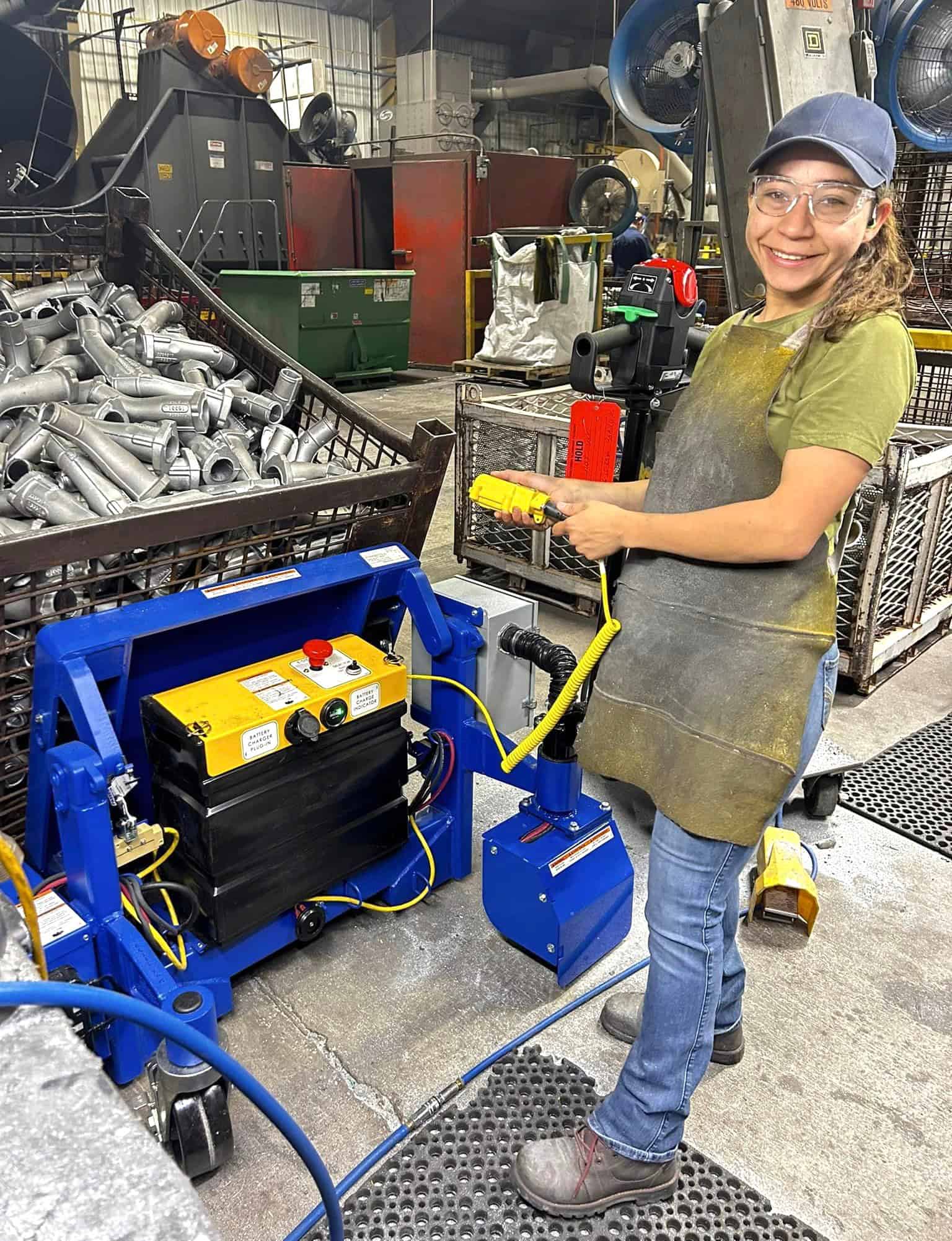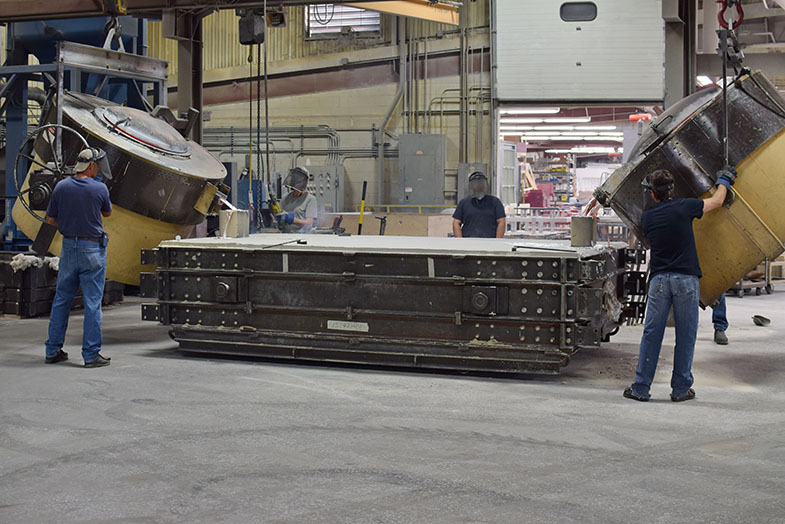Aluminum Foundry challenges and opportunities in metal casting
Everything About Aluminum Foundry: Key Uses and Its Influence on Product Development
Aluminum foundries are essential in modern manufacturing, particularly in sectors such as automotive and aerospace. They utilize innovative strategies to produce lightweight, durable elements that improve efficiency. The convenience of aluminum additionally straightens with sustainability campaigns, making it a favored material. However, the continuous developments in casting methods and their effects for item development raising crucial concerns. What future improvements might improve the landscape of aluminum foundries and their applications?
Review of Aluminum Foundries
Aluminum foundries offer as important facilities in the metalworking industry, specializing in the casting of aluminum and its alloys. These centers make use of different approaches, including sand casting, pass away casting, and investment casting, to transform raw aluminum right into functional types. Each casting method provides special benefits, catering to various project requirements ranging from small components to big structural components.
The foundries run with a careful process that begins with melting aluminum, followed by pouring the liquified steel into molds. After cooling, the castings undertake finishing procedures, which might involve machining and surface area therapy to meet exact specifications.
Quality control is vital, ensuring that the end products satisfy market requirements and customer expectations. On top of that, aluminum foundries often emphasize sustainability by reusing scrap aluminum, consequently minimizing waste and preserving sources. This commitment to effective manufacturing and ecological duty positions aluminum foundries as important factors to the production landscape.

Key Applications of Aluminum Castings
Aluminum castings offer crucial functions in numerous sectors, particularly in automotive and aerospace markets. In the auto industry, they contribute to lightweight frameworks and efficient efficiency. In a similar way, aerospace component production relies upon aluminum castings for their strength and corrosion resistance, essential for high-performance applications.
Automotive Market Applications
In the automobile industry, aluminum castings play a critical function in boosting vehicle efficiency and effectiveness. These castings are widely utilized for parts such as engine blocks, transmission housings, and suspension parts. Their light-weight nature adds to decreased car weight, which in turn boosts fuel economy and handling. In addition, aluminum's excellent thermal conductivity permits effective warm dissipation, important for high-performance engines. The deterioration resistance of aluminum likewise extends the life-span of automobile parts, decreasing maintenance costs. Improvements in casting modern technologies allow the production of complicated forms, maximizing the style and capability of components. In general, aluminum castings are essential to modern automobile design, supporting innovation and sustainability in lorry style.
Aerospace Part Manufacturing
The aerospace industry progressively relies on aluminum castings for an array of important components due to their advantageous residential or commercial properties. Lightweight yet strong, aluminum castings enhance fuel efficiency and general performance in airplane layout. Elements such as engine places, structural frameworks, and landing gear are usually created using aluminum casting techniques, allowing manufacturers to accomplish complex geometries while maintaining structural stability. The high resistance to corrosion and thermal homes of aluminum likewise add to the long life and dependability of aerospace components. Furthermore, improvements in casting modern technologies, such as accuracy casting and 3D printing, have broadened the capabilities of aluminum in this sector. Eventually, aluminum castings play a necessary role in conference stringent safety and security standards and performance demands in modern aerospace applications.
Benefits of Utilizing Aluminum in Manufacturing
While numerous products are offered for manufacturing, aluminum stands apart as a result of its unique mix of homes that enhance efficiency and performance. One significant advantage of aluminum is its lightweight nature, which contributes to decreased energy consumption and enhanced gas performance in different applications. In addition, aluminum exhibits excellent rust resistance, expanding the life-span of items and lowering upkeep prices. Its high thermal and electrical conductivity makes it ideal for heat exchangers and electric components, while its malleability permits functional styles and detailed shapes.
Furthermore, aluminum is recyclable, promoting sustainability in producing processes. This reusability not only preserves sources but likewise decreases the carbon impact connected with production. The versatility of aluminum to various alloys better boosts its utility in varied industries, from automotive to consumer electronic devices. Jointly, these attributes make aluminum a perfect choice for suppliers looking for to balance efficiency, cost-effectiveness, and environmental responsibility.
Advancements in Casting Strategies
Recent innovations in casting methods have actually significantly transformed the aluminum factory market. The assimilation of 3D printing technology additional info has actually enabled a lot more complex layouts, while improved alloy formulas improve efficiency and resilience. These advancements are driving effectiveness and expanding the applications of aluminum in various industries.
3D Printing Combination

Boosted Alloy Formulas
Innovations in aluminum shop innovation have actually caused the development of boosted alloy solutions that improve casting performance and product properties. These cutting-edge formulations often incorporate components such as silicon, magnesium, and copper, which optimize stamina, ductility, and corrosion resistance. By fine-tuning the structures, makers can accomplish details attributes customized to diverse applications, from auto to aerospace industries. Additionally, these enhanced alloys promote far better fluidness during the casting procedure, reducing issues and improving surface finish. Consequently, the efficiency of production is significantly enhanced while preserving rigorous quality standards. This advancement in alloy development not just enhances production however likewise supports the creation of lighter, more powerful components, eventually progressing product advancement and performance.
Influence on Aerospace and Automotive Industries
The notable effect of aluminum foundries on the aerospace and auto sectors can not be overemphasized. Aluminum alloys, known for their lightweight and high stamina, have reinvented the style and manufacturing procedures in both industries. In aerospace, the decrease in weight directly associates to sustain efficiency, permitting for longer flights and lower discharges. Components such as aircraft frames, wings, and engine parts gain from aluminum's exceptional exhaustion resistance and corrosion resistance.
In the vehicle market, aluminum foundries add to the manufacturing of lighter lorries, enhancing performance and fuel economy while fulfilling stringent ecological policies. Using aluminum in engine blocks, body panels, and wheels has actually raised considerably, driven by customer need for extra reliable lorries. In addition, technologies in casting strategies have enhanced the accuracy and performance of parts, making it possible for suppliers to establish even more integrated and intricate layouts, consequently promoting developments in both industries.
Sustainability Practices in Aluminum Foundries
Aluminum try here foundries are increasingly welcoming sustainability practices to decrease their environmental impact while fulfilling the expanding demands of the aerospace and automobile industries. These practices consist of the execution of energy-efficient modern technologies, such as electric melting furnaces and progressed heat recuperation systems, which greatly reduced energy intake (Aluminum Foundry). Additionally, many foundries are prioritizing making use of recycled aluminum, which requires less energy and leads to minimized greenhouse gas emissions compared to main aluminum manufacturing
Water preservation campaigns are additionally obtaining grip, with foundries employing closed-loop systems to lessen water use and protect against contamination. In addition, waste monitoring strategies, consisting of reusing scrap and reducing contaminated materials, add to an extra sustainable procedure. By embracing these methods, aluminum foundries not only enhance their competition yet additionally straighten with international sustainability objectives, eventually supporting a round economy and cultivating innovation in eco-friendly production processes.
Future Fads in Aluminum Casting Innovation
As the need for light-weight and resilient products proceeds to increase, developments in casting technology are positioned to improve the aluminum industry. Advanced techniques such as 3D printing and automated casting procedures are obtaining grip, enabling a lot more complicated geometries and reduced product waste. The combination of synthetic knowledge and maker knowing is also boosting quality assurance and procedure optimization, reducing defects and enhancing efficiency.
In addition, the growth of new aluminum alloys is broadening the application variety of cast items, making them ideal for sectors from automotive to aerospace. Boosted reusing techniques are anticipated to even more reduce environmental influences, aligning with global sustainability goals.
Furthermore, the usage of clever sensors in casting processes is prepared for to make it possible for real-time tracking, ensuring higher accuracy and uniformity. These trends indicate a transformative age in aluminum casting modern technology, enabling producers to fulfill developing market needs while prioritizing sustainability and advancement.
Regularly Asked Questions
Just How Is Aluminum Recycled After Usage in Products?
Aluminum recycling involves accumulating, sorting, and melting made use of aluminum products (Aluminum Foundry). The molten metal is after that cast into brand-new forms, minimizing energy usage and preserving natural deposits, making it a reliable and sustainable process for aluminum recuperation
What Safety And Security Measures Are Executed in Aluminum Foundries?
Precaution in aluminum foundries consist of correct ventilation systems, individual safety tools, routine safety training, devices upkeep procedures, and emergency situation reaction strategies, all focused on reducing dangers related to heats and dangerous materials during manufacturing.
Exactly How Do Aluminum Foundries Ensure Quality Control?
Aluminum foundries implement extensive quality control procedures, including material examinations, temperature monitoring, and dimensional checks. These measures guarantee item consistency, minimize problems, and abide by market standards, inevitably enhancing consumer fulfillment and operational performance.
What Are Typical Obstacles Dealt With by Aluminum Foundries?
Aluminum foundries commonly deal with obstacles such as maintaining regular high quality, managing production expenses, making sure prompt distribution, resolving equipment maintenance, and adapting to evolving market laws. These elements can substantially impact general operational performance and earnings.
Just How Does Aluminum Casting Affect Product Weight?
Aluminum casting significantly reduces product weight due to aluminum's reduced thickness compared to various other steels - Aluminum Foundry. This lightweight particular improves style flexibility, improves gas performance in transport applications, and supplies benefits in various industries calling for weight-sensitive elements